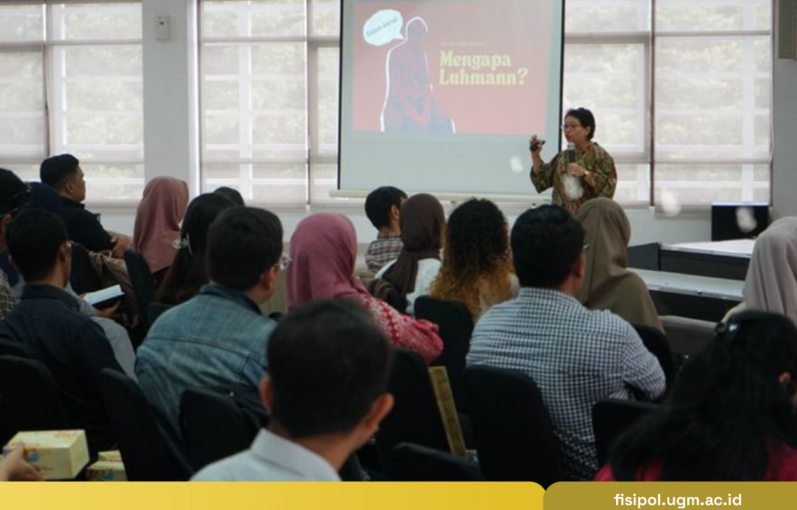
Yogyakarta, June 17th 2025—A professor from UGM’s Department of Communication Science published an introductory book regarding the theory of Niklas Luhmann as an eye-opening perspective in the field of communication science. Prof. Dr. Phil. Hermin Indah Wahyuni organized a discussion with several communication science experts from Universitas Padjadjaran titled “Titik Balik: Teori Sistem dalam Ilmu Komunikasi” on Tuesday (17/6).
Niklas Luhmann is a German sociologist who discovered the systems theory. Luhmann was inspired by Talcott Parsons theory of the social system, which aims to answer the many questions that society faces in regards to social change. It is the development of this theory that is explained as the Luhmann systems theory, in which the social system is not shaped through mutual agreement, moreso through conflicting disagreement. Without difference of opinions, there won’t be interaction between social actors and therefore, a system will not be formed.
The Luhmann theory holds an interesting perspective regarding the systems of information and communications more commonly known as the autopoietic system of communication. Communication science is positioned as an imaginary bridge between information. The autopoietic theory of communication directly criticized that perspective. Hermin mentioned that this theory becomes much more interesting because it deattaches itself with the common assumption regarding the roles of actors in communication. “Luhmann wants to shift that perspective, he wants to change society not as individuals but as ways of communication. A society does not exist without communication,” Hermin explained.
The field of sociology and communication science is very close, but Hermin talked about how Luhmann is one of the few sociologists who positions communication not only as a bridge. Hermin then pictured that all this time social and political science is always focused on the actor, similar to communication science. For example, news regarding stories of corruption will give a place for actors as the main perpetrator. The system itself is not that much highlighted in comparison.
“It is not easy to understand Luhmann’s theory, remembering that the theory is picturing the future and not the past. With that, understanding of this theory depends on whether or not our people are already future-oriented or not,” Hermin spoke. Hermin then continued on to say that Luhmann wrote that modern society does not communicate through media, rather then through systems. The difference between communication through media is correlated with the system dominating such discourses. This view deflects the opinion that we have to be able to differentiate between the right and wrong messages because everything has been manipulated by the system.
Borrowing biological terms, autopoiesis pictures the process of cells developing on its own. In the context of communication science, cells will not develop without communication. The development of human civilization is shaped by today’s ways of communication. Hermin emphasized that only communication can communicate, and communication pushes for more communication. Alas, society is not humans, but forms of communication.
Prof. Dr. Atwar Bajari appreciated the book aforementioned. According to Atwar, it is not easy to understand the inner workings of Luhmann’s theory, remembering its complexity. Hermin was however able to explain the theory and apply it to contemporary issues that we face today. The book discusses three major topics, which is digital transformation, information systems, as well as structures of crisis management.
“It is absolutely incredible that with ten years of understanding Luhmann’s works, Prof. Hermin was able to create an introductory book from Luhmann’s complex theory. I hope that this can be a pathway for future implementations of the Luhmann theory in contemporary and future research,” Atwar concluded.
